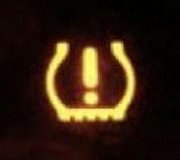No store recommendations. My friend used to own a shop that had very good luck with Cooper tires. I worked for a very nice family-owned Chrysler dealership. Chrysler had an affiliation with Goodyear. Had good luck with them too. Most GM cars come with Uniroyal tires. In my opinion those are junk. Broken belts are very common. Some new cars come with the cheapest quality tires that will do the job. Expensive cars usually come with high quality tires.
I shouldn't say misalignment won't cause cupping; it's just that there are many more common causes. When the tires are cupped, your fingertips will move up and down as you run them around the tire along the outer edge. You can see the irregular pattern too when the sun makes shadows on the edges. It's caused by the tire tread walking to the side then springing back. This is more common on the rear because there is a lot less weight so the tires are free to do so. If rear wheel alignment is the problem, both tires will show the same wear.
"Toe" is the direction the tires are steering. Ideally all four should be pointing perfectly straight ahead when the steering wheel is straight. Here's where it helps to exaggerate for clarity. When toe is incorrect, the "leading edge" of the two tires will wear off faster. Toe is the measurement on any one tire. "Total toe" is the two tires on the same axle taken together. Imagine both front tires steering toward the center of the car, similar to a V-shaped snowplow. The left tire is trying to go to the right and the right tire is trying to go left. THAT's total toe in. To determine the leading edge, exaggerate it. Imagine the left tire turned 90 degrees to the right so it's steering straight toward the ditch. Now, the leading edge is easy to see; it's the outside edge of the tire. It's the first part of the tire coming down the road.
Now take a pencil, stand it straight up so its eraser is resting on the table. Hold it straight up while pushing down and dragging it sideways. You'll see the leading edge scrubs off making eraser crumbs, but the trailing edge lifts up and off the table so it doesn't wear down. That's what happens on your tires.
Total toe is affected by road forces too that try to pull the tires backward, especially when you're braking. To counteract those forces, the alignment is set for just a tiny amount of total toe in. While driving, road forces will pull the tires back just a fuzz and make the alignment perfect. Anything that is worn and preventing it from holding the tire in that perfect position will lead to tire wear. I mentioned struts and shock absorbers, but your car is too new to suspect problems with those parts already.
Camber is the tilt of the tire as seen from in front or in back of the car. Positive camber is when the tire is tilted out a little on top and is the most common setting. When one tire is tilted out too much, that tire will run on the outer edge which is what will wear fastest. It will not affect any other tires. Tires want to roll in the direction they're leaning, so besides being set as close as possible to the desired setting, it is very important both front tires be set the same. That way the pulling forces are equal and the car will go straight when you let go of the steering wheel.
If the alignments that were done already were done under warranty, it's possible not every wheel was adjusted. Warranty times are very tight and rarely allow enough time to do a thorough, conscientious job. You might have to just let the tires wear out, then buy new ones from a tire store and have them check the alignment. It is also very possible the alignment computer is out of calibration. That would show up by comparing printouts from two different shops. Tire stores are very concerned with warrantying tires due to wear so they will be very picky about proper alignment. They want their tires to last.
There are differing opinions about rotating tires. "Do as I say, not as I do" comes to mind. If you rotate them about every ten to fifteen thousand miles, they will all wear out at the same rate. They will last longer, then you get to buy four new tires. I never rotate mine. I have all Chrysler products, all but one are front-wheel-drive. That means the front tires wear out twice as fast but I only buy two new tires twice as often. I try to time that with the coming of winter so I have good traction in snow and the coming spring with lots of standing water on the roads.
Caradiodoc
Monday, December 13th, 2010 AT 9:13 PM



